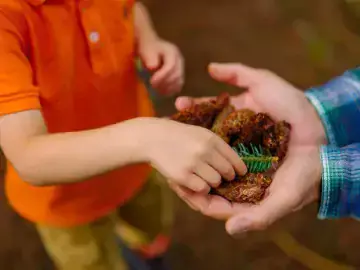Image

Nature is full of patterns and shapes. We can observe these shapes to help us understand the variety of plants that grow around us.
This activity is an opportunity to take your learners outside, explore your environment together and observe the different shapes and patterns you can find in leaves on the ground. This offers the opportunity to discuss what this shows us about the variety of life around us, how it makes us feel, and if you like, start to identify the plants, including trees, that these leaf shapes belong to.
Outdoors
This activity can be used to support curriculum knowledge and skill development in science and maths, alongside enhancing nature education, with age appropriate adaptations.


